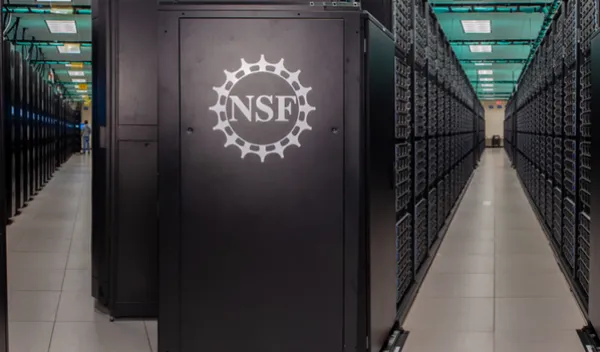
Supercomputing simulation reveals weaknesses in HIV-1 defense
How HIV-1 infects cells is not fully understood. Discoveries from a recent study have provided new insights, however. Computer scientists at the Texas Advanced Computing Center, supported by a grant from the U.S. National Science Foundation, ran the first realistic simulations of how the HIV capsid stabilizes and forms.
Capsids need to stay stable long enough to deliver the infection to cell nuclei, breaking apart when the infection is released. How capsids remain stable despite strain from infiltrating nuclei is a question. "The vulnerabilities in the armor of the HIV-1 virus capsid were revealed by the simulations and analyses we did," said Gregory Voth, lead author of the study.
The team used cryo-electron tomography data from viruses to develop the simulation. The images show that the capsids display signs of unequally distributed strain, mapping out the weakest parts of the structure.
"We were able to correlate the patterns of how the lattice is strained with how the capsids actually break apart," Voth said. "It's the most realistic simulation study of HIV capsids to date. We could also see that the proteins that pack into this virus capsid have somewhat different conformations than are seen in simpler crystal structures or in vitro reconstitutions." The new model also included elements missing from earlier iterations.
The discovery could lead to treatments that make the capsid vulnerable to damage and destruction before it gets the opportunity to deliver its payload. The scientists are now asking how drugs interact with the capsid.
Voth said that "supercomputers combined with the methods we developed have helped reveal essential elements of the HIV-1 virus that are experimentally extremely difficult to probe. I don't think we could have easily done those simulations anywhere but on Frontera."
"The NSF-funded Frontera is a critical tool for the nation's scientific research community, which is increasingly dependent on large-scale cyberinfrastructure resources,” said Manish Parashar, director of NSF's Office of Advanced Cyberinfrastructure. “Frontera is a valuable resource in the quest to better understand disease pathways, which will ultimately improve our nation's health."
